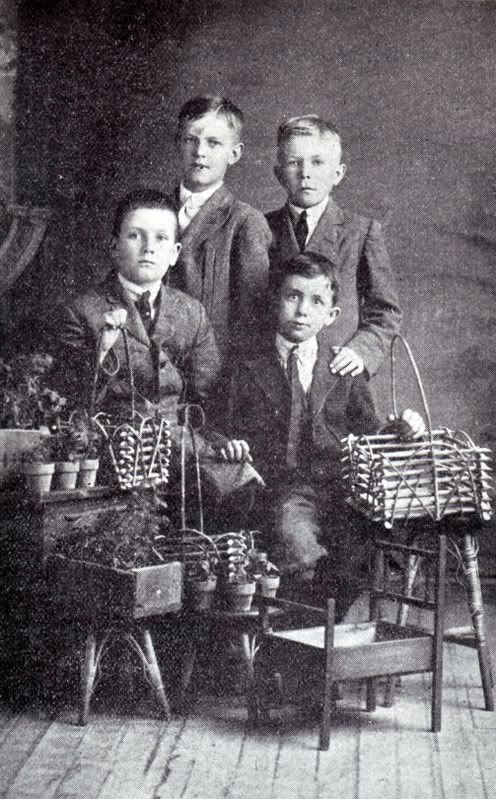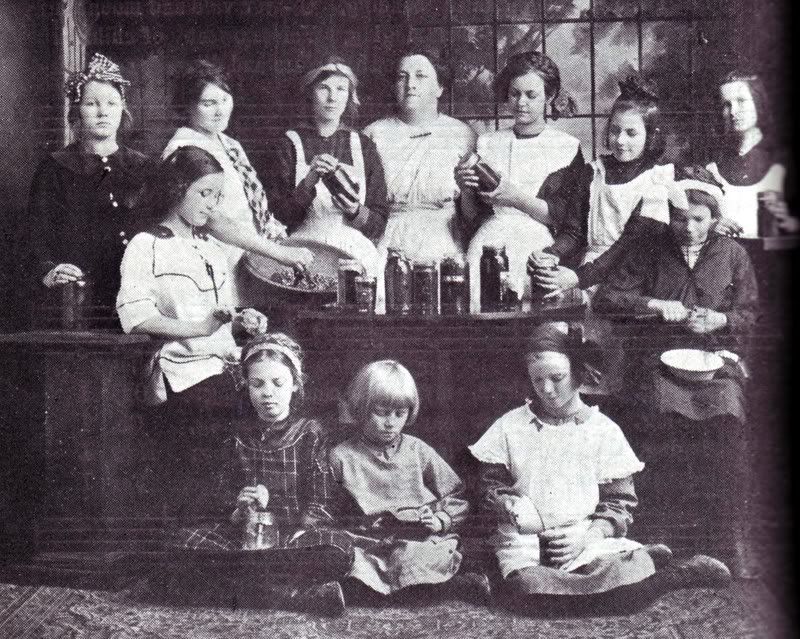Aurelia Spencer Rogers, the originator of the Primary program, envisioned every type of wholesome activity as falling within the purview of the program – if it engaged the attention of children, if it taught them something worthwhile, if it trained them in knowledge or service or manners or morality, it belonged in Primary. One of the early activities she organized for her ward in Farmington, Utah, was a community garden where the boys raised beans and popcorn.
The sisters of the Blackfoot (Idaho) 2nd Ward drew on that tradition when they planned their activities for 1914.
Early Spring, 1914
The ward Primary leadership called on merchants in Blackfoot and obtained a number of wooden shipping crates, which someone knocked down into their constituent boards. Other preparations were made with a farmer who had land near the ward chapel.
 The 10- and 11-year-old boys of the ward were instructed to bring their hammers, saws, and nails – they all had their own, apparently – to Primary one day. Their teachers wouldn’t tell them what they were going to do; the mystery added to the anticipation.
The 10- and 11-year-old boys of the ward were instructed to bring their hammers, saws, and nails – they all had their own, apparently – to Primary one day. Their teachers wouldn’t tell them what they were going to do; the mystery added to the anticipation.
After opening exercises that day, the boys were shown how to build boxes, about 7″x12″x4″, and they all banged and sawed cheerfully away. Still, they did not know what they were making.
Then the boys walked a short distance to the farmer’s field, where they were told to fill their boxes with the richest soil. While they were doing that, their teacher slipped away to the farmer’s greenhouse and returned with a supply of seedling tomato plants, which the boys planted in their boxes. They took their boxes home, tending their plants carefully indoors until they were big enough, and the weather warm enough, to transfer the tomatoes to outdoor gardens.
(In this photo, the boys display not only their tomato plants, but some willow baskets and a doll bed that they learned to make in Primary.)
July and August, 1914
One morning their teacher answered a knock at her door and found one of her boys standing there, wearing a grin from ear to ear, and holding a bucket filled with ripe red tomatoes, the first of the crop. It was time to trigger the second part of the Primary plan.
 All through the summer, each time enough tomatoes had ripened, different groups of 10- to 13-year-old Primary girls (MIA didn’t start until age 14 in those years) were called to their teacher’s house on Primary day, where they learned how to bottle the tomatoes. (If you’ve ever bottled tomatoes at home, with the slipped skins and the juice and the stickiness that is unavoidable even with experienced canners, you know exactly how dedicated that Primary teacher was!)
All through the summer, each time enough tomatoes had ripened, different groups of 10- to 13-year-old Primary girls (MIA didn’t start until age 14 in those years) were called to their teacher’s house on Primary day, where they learned how to bottle the tomatoes. (If you’ve ever bottled tomatoes at home, with the slipped skins and the juice and the stickiness that is unavoidable even with experienced canners, you know exactly how dedicated that Primary teacher was!)
September, 1914
The Primary girls entered some of their canned tomatoes in the state fair … and won a first place ribbon. The boys continued to harvest fruit from their vines, and the girls continued to can. Some of their produce was offered for sale, with the profits going into the Primary budget.
October, 1914
When the days grew shorter and frost seemed imminent, the boys gathered the last of their crop, including the green and partially ripe fruit. One last canning session by the girls produced bottles of pickled green tomatoes.
December, 1914
The Blackfoot 2nd Ward prepared its customary food deliveries to needy families in their area – including the Primary children’s home-grown and home-canned tomatoes and pickles.
Not bad for a handful of 10- to 13-year-olds, eh?
Continue reading at the original source →



